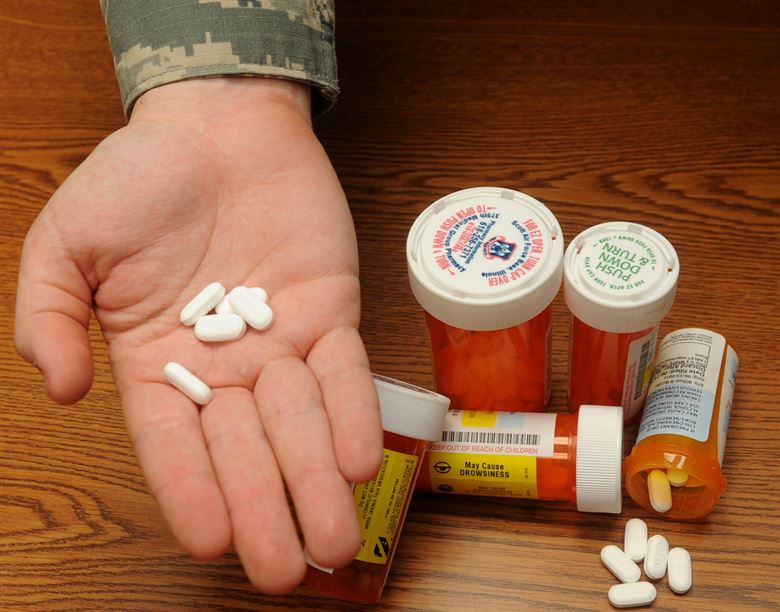
[U.S. Air Force/Senior Airman Kristin High (RELEASED)]
The use of performance-enhancing drugs has a long history in war, both as a product of state-sanctioned programs and illicit use by participants.
Aggression, energy and alertness have always been critical to any warfighter, but artificial means of achieving and maintaining a state of combat readiness have evolved—or devolved, as the case may be—and possibly spread in recent decades:
- Child soldiers fighting for Sierra Leone’s Revolutionary United Front consumed a mixture of marijuana, cocaine and hallucinogenic drugs, including “brown-brown,” a snorted blend of cocaine and gunpowder.
- Some ISIS fighters reportedly use a methamphetamine-like psychostimulant in their brutal quest to create a global caliphate; steroids were found at an ISIS training centre in Mosul in 2016.
- Warring factions in Syria are known to take an amphetamine called Captagon, or fenethylline.
- In Somalia, pirates and fighters alike chew khat, a plant common in the Horn of Africa and known for its stimulating properties.
- Terrorists who fought Indian commandos in Mumbai for 60 hours without food or sleep a decade ago were trained on steroids and relied on cocaine and other stimulants to stay awake, even through injury.
The use of stimulants and other drugs as means of motivating and sustaining armies dates to antiquity.
In his 2016 book Shooting Up: A Short History of Drugs and War, Polish historian Lukasz Kamienski traces the use of drugs as enhancers of military capabilities. He describes mushroom-crazed Viking raiders, Inca warriors hopped up on coca leaves, American Civil War soldiers hooked on morphine and the speed-driven, blitzkrieging Wehrmacht of Nazi Germany.
Kamienski argues that since the beginning of organized combat, armed forces have prescribed drugs to their members for two reasons: to enhance performance during combat and to counter the trauma of killing and witnessing violence.
Stimulants such as cocaine and amphetamines have been used to create better soldiers by improving stamina, overcoming sleeplessness, eliminating fatigue and boosting fighting spirit.
Downers such as alcohol, opiates, morphine, heroin, marijuana and barbiturates have addressed with varying success the soldier’s greatest enemy—shattered nerves.
Military historian John Keegan was once asked the question: why do soldiers fight? “Inducement, coercion, narcosis,” he replied.
Dehumanizing training regimens provide the inducement. Leaders manipulate and obfuscate the truth to coerce nations to fight in their name. As for narcosis, Kamienski says an altered state of mind is simply required to kill.
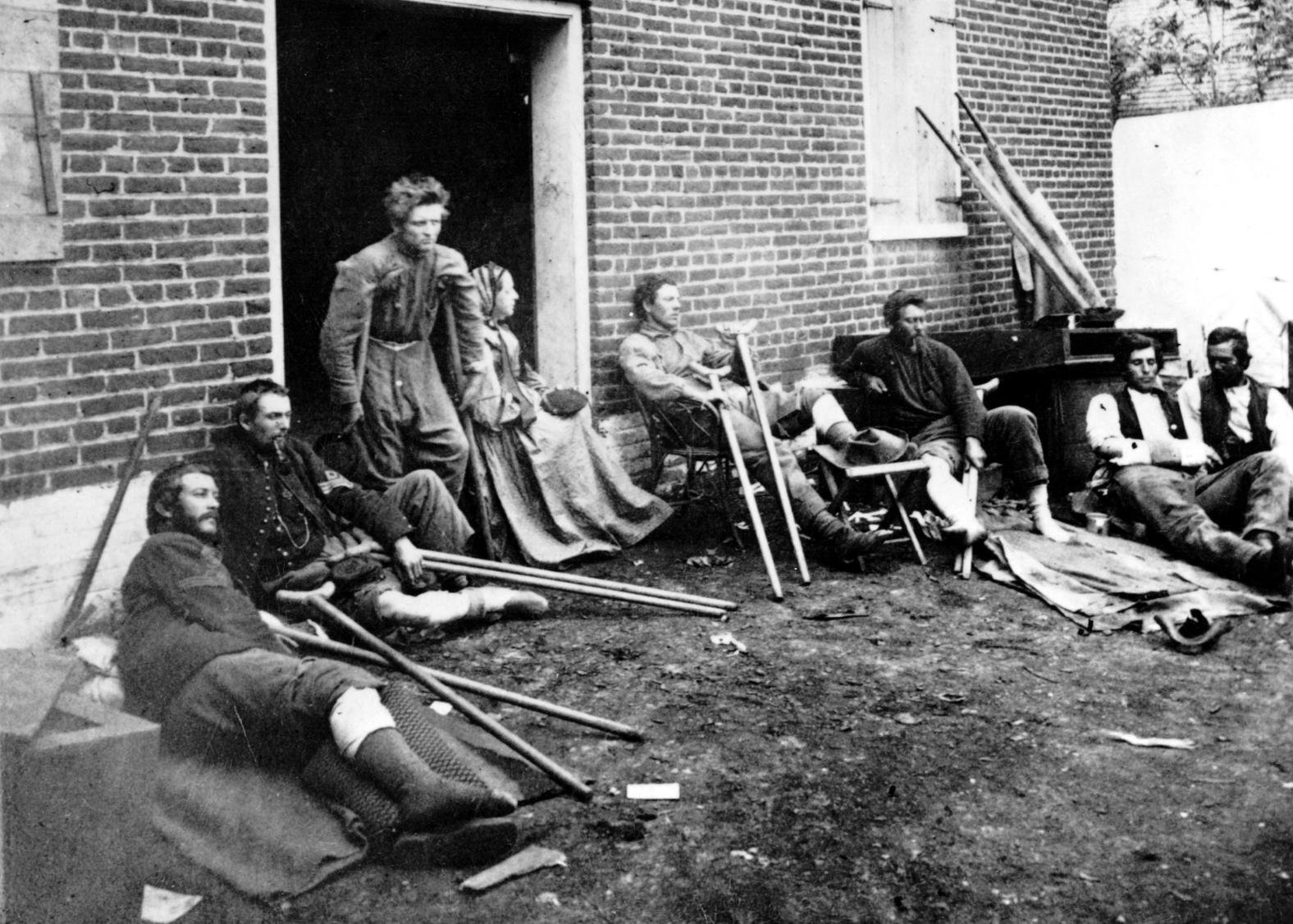
An estimated 400,000 soldiers returned from the American Civil War as morphine addicts. The term “soldier’s disease” was even coined to describe the addiction. By the end of the 19th century, a million Americans were afflicted.
Wine and opium desensitized the Greeks. Siberian tribesmen ate magic mushrooms. Zulus would use psilocybin mushrooms and cannabis in the form of a snuff.
But none rivalled the fearsome Vikings who, their enemies believed, were imbued with a fury imparted by their god Odin. It was said to have compounded their strength, erased their humanity and dulled their pain. They bit their shields, howled like wolves and slaughtered wholesale, according to Kamienski.
He attributed the Vikings’ inspiration to amanita mushrooms. A toxicologist explained they made users believe they had morphed into an animal. Other scholars propose they used the poisonous plant henbane.
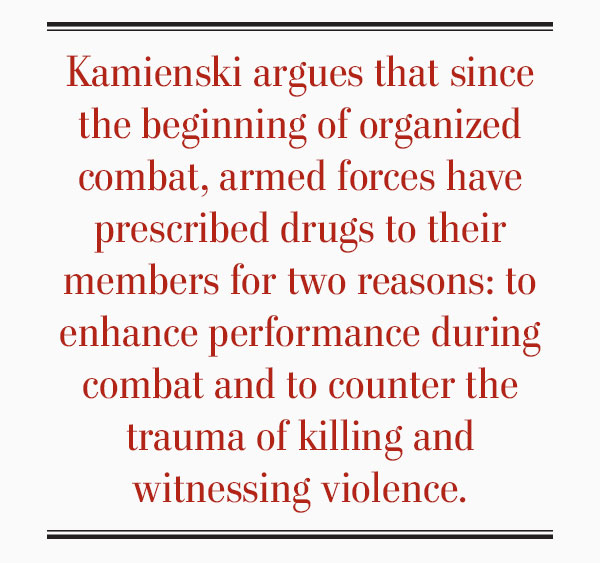
The effects of performance-enhancing substances can last well beyond their intended use, often with unforeseen effects. Especially in the past, when their properties were not fully understood.
Historians estimate that 400,000 soldiers returned from the U.S. Civil War addicted to what was then considered the wonder drug morphine. By the turn of the century, a million Americans had so-called “soldier’s disease.”
In the First World War, daily rations of rum and tobacco were distributed to help calm the nerves of sailors at sea—a long navy tradition—and soldiers in the trenches. Some 14 million cigarettes were handed out each day to American doughboys alone.
In Canada, the Royal Over-Seas League produced a series of storefront posters urging folks on the home front to contribute to “Canada’s Tobacco Fund.”
By the Second World War, more sophisticated forms of inspiration were emerging.

Pervitin was the official methamphetamine of the Third Reich. It was said to have sustained the Wehrmacht through its blitzkriegs in Europe.
In 1939, German scientist Adolf Butenandt received the Nobel Prize in chemistry for his work documenting how hormones transfer signals to regulate bodily functions. His revolutionary discoveries paved the way for, among other things, development of anabolic steroids—an eventual staple of Olympians in much of the East Bloc, but especially the partitioned Cold War state of East Germany.
The Wehrmacht ordered some 35 million Pervitin tablets, an amphetamine-based drug, while preparing to launch their 1939-40 campaign in Europe.
“The astonishing success of the Wehrmacht’s blitzkrieg tactics might be at least partially explained by the pharmaceutical advantage its soldiers enjoyed,” Thomas M. Hunt wrote in March for the online journal Stratfor.
By 1944, German scientists were testing a drug code-named D-IX—a mixture of cocaine, Pervitin and a morphine-related painkiller. Prisoners at Sachsenhausen concentration camp in Germany were reportedly able to march non-stop almost 90 kilometres carrying 20-kilogram packs after taking the drug.
The war ended before it could be of any use.
Whether formally authorized or not, Canadian medical officers routinely handed out stimulants to aircrew and others between 1939 and 1945. They were widely used by Battle of Britain pilots in the desperate days of summer 1940.
The Royal Navy authorized the stimulant Benzedrine in September 1941 after British scientists endorsed its use. The British army and its air corps followed suit a few months later.
“By the end of the conflict, British forces had distributed some 72 million doses of the stimulant,” Hunt wrote. “For its part, the United States never officially sanctioned the use of pharmaceutical stimulants during World War II.”
Reports suggest U.S. servicemen either acquired or were issued amphetamines, regardless, and used them in even larger numbers than their British counterparts. They were also used by Japanese and Finnish forces, though not by Soviet troops.
“My conclusion would be that the Second World War was fought heavily on speed or meth,” Kamienski told Vice News in 2016.
It only got worse.
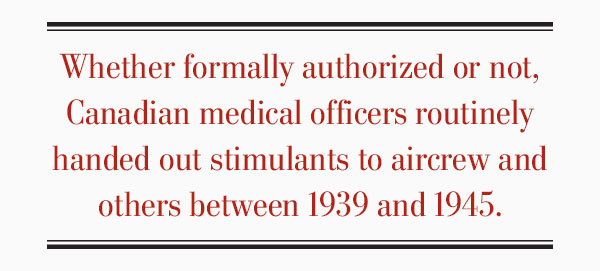
The “speedball”—an injectable mixture of amphetamine and heroin—was concocted by American servicemen during the Korean War.
The Soviet Union, which would become a world leader in anabolic steroid and hormone development, spent decades secretly searching for energy-enhancing plants that would boost the performances of Olympians, soldiers and astronauts.

The Rhodiola plant, rooted in the Arctic, was found by Soviet scientists to be an effective stimulant, helping soldiers stay alert and energized with limited side effects.
Rhodiola—a yellow-flowered succulent native to snowbound Arctic climes—elicited the most promising results. “It stimulates you, without making you crash and burn,” Patricia Gerbarg, an assistant clinical professor in psychiatry at New York Medical College and co-author of a 2004 book, The Rhodiola Revolution.
The Soviets found that it helped soldiers stay alert and energized during sleep-deprivation tests, Gerbarg told National Geographic in 2016. It put cosmonauts at the Russian space station in a better mood after weeks of cramped living.
U.S. military personnel began using performance-enhancers in “truly astonishing numbers” in Vietnam, writes Hunt, citing a 1971 government report that said 225 million doses of stimulants were distributed between 1966 and 1969 alone.
Vietnam has been characterized as the first “pharmacological war,” The Atlantic reported in 2016, due to “a level of consumption of psychoactive substances by military personnel…unprecedented in American history.”
Illicit use of marijuana by American ground troops in Vietnam—88 per cent of whom were draftees in 1969—is well documented. Research suggests that 3.2 per cent of soldiers arriving in-country were also heavy amphetamine users. The rate is believed to have risen to 5.2 per cent after a year.
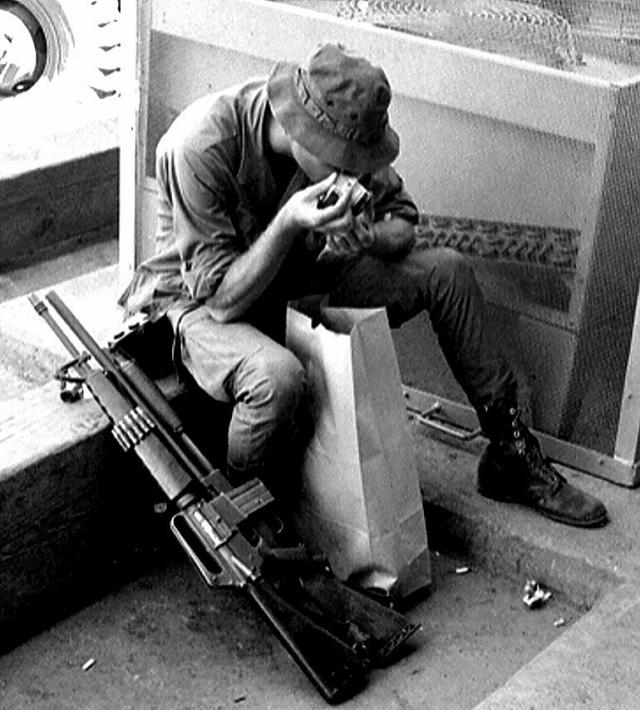
U.S. troops in Vietnam consumed more amphetamines than U.S. and British troops took during the Second World War. Amphetamines, marijuana and heroin use was common among so-called grunts. [ALDO STEPHEN PANZIERI, 1969]
“We had the best amphetamines available and they were supplied by the U.S. government,” Elton Manzione, a member of a long-range reconnaissance platoon, told The Atlantic.
A navy commando said the drugs “gave you a sense of bravado as well as keeping you awake. Every sight and sound was heightened. You were wired into it all and at times you felt really invulnerable.”
Soldiers infiltrating Laos received medical kits that included 12 tablets of the painkiller Darvon, 24 tablets of the opioid codeine, and six Dexedrine pills. Special units were also given steroid injections before particularly long and demanding operations.
By the Iraq War, prescription drug abuse had reportedly tripled. Artane, an antispasmodic intended to treat Parkinson’s disease, was the drug of choice among Iraqi army soldiers. It can have euphoric effects when used in high doses.
“They believe that this Artane allows them to become courageous, to become brave,” a doctor, speaking on condition of anonymity, told The New York Times in 2008. “They take it so that there is no anxiety, no fear, so they can break down doors and enter houses with no shame.”
Several countries, including Canada, have researched modafinil, an alternative to amphetamines. The U.S. military has approved its use on some air force missions, and studies continue.
“Modafinil is a unique wakefulness-promoting medication,” said a 2005 study published in the journal Military Medicine. “It is non-addictive and has a superb safety profile.”
Early researcher Michel Jouvet asserted in 1989 that modafinil “could keep an army on its feet and fighting for three days and nights with no side effects.”
“Military studies have repeatedly demonstrated that modafinil has the ability to promote wakefulness and improve cognitive performance during sustained periods of sleep deprivation associated with military operations,” Dr. Kelli J. Westcott wrote in Military Medicine.
Like virtually all performance-enhancing substances, sanctioned use of modafinil does raise significant ethical issues, Westcott cautioned, pointing out that by 2005 health-care professionals had already ruled out its use by resident doctors because it might compromise patient safety by hindering decision-making ability.
“Those in charge of military operations must carefully consider who will be appropriate candidates for the use of modafinil,” Westcott wrote. “It is imperative to determine whether this medication will improve our abilities or endanger them.”
Advertisement





















